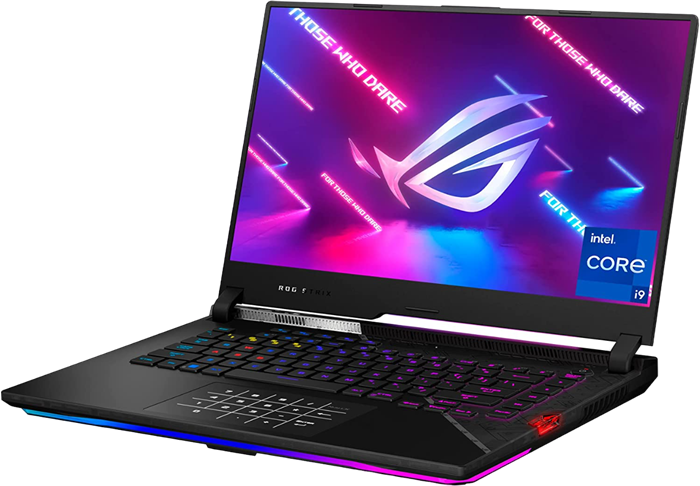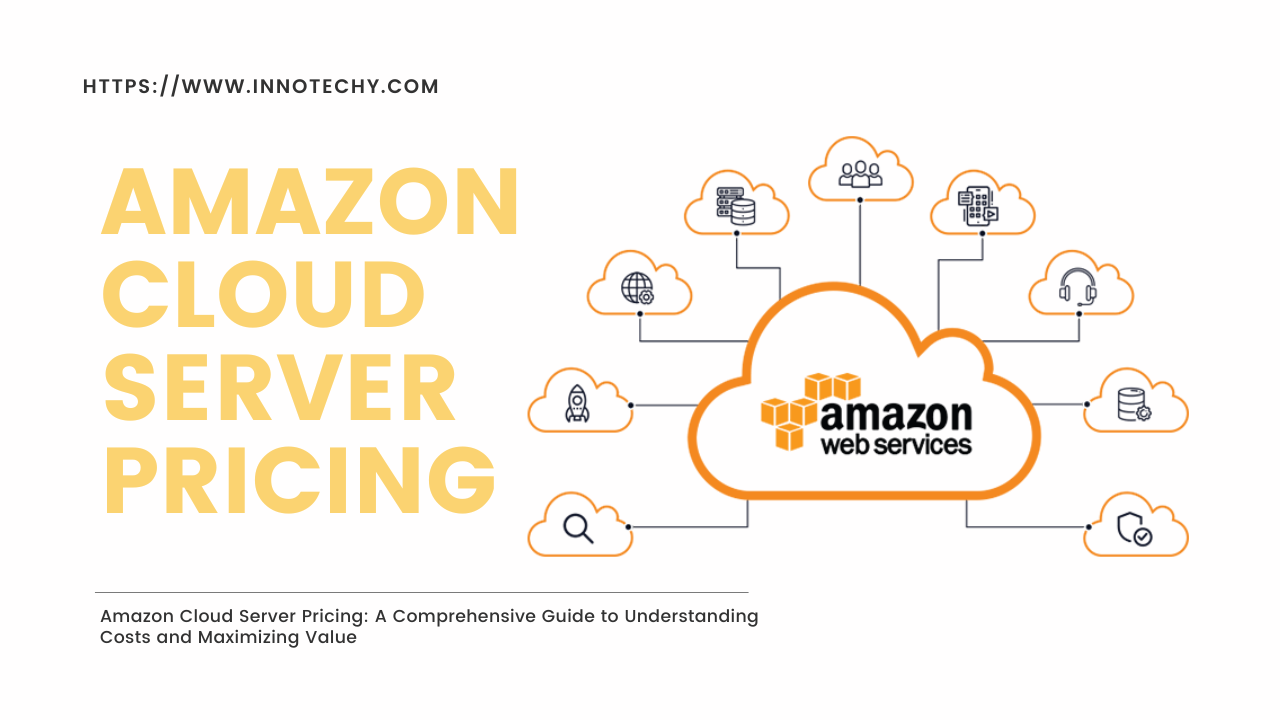[lwptoc]
Introduction:
Best Laptops for Streaming, Over the past decade, there has been a significant shift in how people consume media and entertainment. Traditional cable and satellite television has faced stiff competition from streaming services such as Netflix, Amazon Prime Video, Hulu, and Disney+. These platforms offer on-demand access to a vast library of movies, TV shows, documentaries, and original content.
This paradigm shift in media consumption has led to the growing popularity of streaming laptops. A streaming laptop refers to a portable computer that is specially optimized for streaming content from online platforms. These laptops are designed to provide a smooth and immersive streaming experience, allowing you to enjoy your favorite movies, TV shows, and live events without any interruptions or performance issues.

There are several reasons behind the growing demand for streaming laptops:
Flexibility and Portability: Streaming laptops offer the freedom to stream content from anywhere with an Internet connection. Unlike traditional TVs, which are fixed in one place, laptops are portable and can be easily moved around the house or taken on the go. This flexibility appeals to users who want to watch their favorite shows or movies in different rooms or while traveling.
Personalized viewing experience: Streaming laptops provide users with personalized viewing experiences. They can create individual profiles on streaming platforms, allowing them to curate their content libraries, get personalized recommendations, and track their viewing history across devices. This level of customization enhances the overall viewing experience and makes it more engaging.
Wide range of content: Streaming platforms offer a wide catalog of content, including movies, TV shows, documentaries, and exclusive originals. With a streaming laptop, users have access to a wide array of entertainment options at their fingertips. They can explore different genres, discover new releases, and watch their favorite series all on one platform.
On-Demand and Live Streaming: Streaming laptops enable users to enjoy both on-demand and live-streaming content. They can access pre-recorded shows and movies on demand, allowing them to watch at their convenience. Additionally, many streaming platforms also offer live streaming of sporting events, concerts, and other live performances, bringing the thrill of real-time experiences directly to the laptop screen.
Cost Effectiveness: Streaming services often come at a fraction of the cost of traditional cable or satellite TV subscriptions. By choosing a streaming laptop, users can eliminate the need for expensive TV packages and enjoy a wider range of content at a more affordable price. This cost-effectiveness makes streaming laptops an attractive choice for budget-conscious users.
The growing popularity of streaming laptops can be attributed to the convenience, flexibility, and personalized experience they offer to users. As streaming platforms continue to expand their content libraries and expand their features, the demand for streaming laptops is expected to further increase, providing a seamless and enjoyable entertainment experience for users around the world.
Understanding Streaming Laptop Requirements
Processor power and speed:
The processor, also known as the CPU (Central Processing Unit), is the main component that determines the performance and speed of a streaming laptop. When it comes to streaming, a powerful processor is essential for smooth playback, efficient multitasking, and handling resource-intensive tasks. Processors with higher clock speeds and multiple cores, such as Intel Core i5 or i7, or AMD Ryzen processors, are preferred for laptop streaming. These processors provide the processing power necessary to handle streaming software, encoding, and decoding of video content, ensuring a lag-free and smooth streaming experience.
Graphics capabilities and dedicated GPUs:
Graphics capabilities play an important role in the visual quality and smoothness of streaming content. While the integrated graphics processors (GPUs) found in most CPUs can handle basic streaming needs, dedicated GPUs (graphics processing units) provide higher performance for demanding tasks. Dedicated GPUs, such as those from NVIDIA (such as the GeForce GTX or RTX series) or AMD (such as the Radeon RX series), offer better graphics processing power and hardware acceleration for video playback and encoding. They are especially useful for playing high-resolution content, gaming, and handling graphics-related applications.
RAM and Storage Considerations:
RAM (Random Access Memory) and storage are important factors to consider when choosing a streaming laptop. Sufficient RAM allows for smooth multitasking and efficient handling of streaming software, web browsers, and other applications simultaneously. Aim for at least 8GB of RAM, but for better performance, consider 16GB or more.
Storage capacity is also important. For streaming laptops, a combination of a solid-state drive (SSD) and a large hard disk drive (HDD) is ideal. SSDs provide faster data access and boot times, resulting in faster application launches and smoother streaming. A large HDD can accommodate a large library of downloaded or locally stored content.
Display quality and resolution:
A high-quality display is critical to an immersive streaming experience. Look for laptops with displays that have color accuracy, wide viewing angles, and high resolutions. Full HD (1920×1080) displays are common and provide sharper visuals, but for an even more detailed and dynamic experience, consider a laptop with a 4K UHD (3840×2160) or QHD (2560×1440) display. Additionally, features like HDR (High Dynamic Range) support can enhance the display’s contrast and color accuracy, resulting in more vivid and dynamic visuals.
Battery life and portability:
Battery life and portability are important considerations, especially if you plan to use your streaming laptop on the go or in different locations. Look for a laptop with long battery life, ideally at least 6-8 hours, to ensure uninterrupted streaming sessions without constantly plugging in. Portability is also a factor to consider, as lighter and more compact laptops are easier to carry and handle. Thin and light designs, such as ultrabooks or thin and light gaming laptops, offer great portability without compromising performance.
Choosing the Right Operating System
Pros and Cons of Windows, macOS, and Linux for Streaming:
Windows:
Pros: Windows is the most widely used operating system and offers wide compatibility with various streaming platforms and software. It has an extensive library of streaming apps available through the Microsoft Store. Windows laptops often offer a wide range of hardware options, making it easy to find a laptop with powerful processors, dedicated graphics cards, and enough RAM for streaming purposes.
Cons: Windows is more susceptible to malware and security threats than other operating systems. It may require regular updates and maintenance to ensure optimal performance and security.
macOS:
Pros: macOS provides a smooth and user-friendly streaming experience, especially for those already accustomed to Apple’s ecosystem. It offers great integration with popular streaming platforms, and macOS laptops are known for their high quality and aesthetics. They often have good battery life, which makes them suitable for portable streaming.
Cons: The software library for streaming apps on MacOS can be more limited than on Windows. Mac laptops typically cost more and have less hardware customization available than Windows laptops.
Linux:
Pros: Linux is an open-source operating system that offers high customization and flexibility. It is known for its stability, security, and performance. Linux laptops are often preferred by tech-savvy users who value privacy and customization options.
Cons: Linux may have limited compatibility with certain streaming platforms and software, as they are primarily developed for Windows or macOS. Some streaming apps may not have official Linux versions, although workarounds and alternative open-source options are available. Linux laptops also have a smaller market share, resulting in fewer hardware options and driver support.
Compatibility with streaming platforms and software: When choosing a streaming laptop, it’s important to ensure compatibility with your favorite streaming platforms and software.
Consider the following points:
Streaming platforms: Make sure your chosen operating system supports the streaming platforms you use most, such as Netflix, Amazon Prime Video, Hulu, or Disney+. Most popular streaming platforms offer support for Windows and macOS. However, it is important to check whether specific features or functions are available on each platform, as they may sometimes differ.
Streaming software: If you plan to stream your content or engage in live streaming, consider streaming software such as OBS (Open Broadcaster Software), XSplit, or Streamlabs OBS compatibility. Check if the software is available for your chosen operating system and if it offers the necessary features you need for your streaming setup.
It’s worth noting that Windows has wider compatibility with streaming platforms and software due to its market dominance. macOS has good compatibility with major streaming platforms, but some streaming software options may have limited support. Linux may require additional configuration or alternative open-source software to achieve full compatibility.
By considering the pros and cons of each operating system and ensuring compatibility with your favorite streaming platforms and software, you can make an informed decision when choosing a streaming laptop that best suits your streaming needs.
Connectivity and Networking
Wi-Fi Standards and Compatibility:
When choosing a streaming laptop, it is important to consider Wi-Fi standards and compatibility to ensure a stable and high-speed Internet connection for streaming content. Wi-Fi standards determine the speed and range of wireless connectivity. Some common Wi-Fi standards include:
Wi-Fi 4 (802.11n): Provides decent speed and range for basic streaming needs. It operates on the 2.4 GHz frequency band and offers a theoretical speed of up to 300 Mbps.
Wi-Fi 5 (802.11ac): Offers faster speeds and better performance than Wi-Fi 4. It operates on both the 2.4 GHz and 5 GHz frequency bands, providing theoretical speeds of up to several gigabits per second (Gbps).
Wi-Fi 6 (802.11ax): The latest Wi-Fi standard, offering even faster speeds and better performance. It operates on both the 2.4 GHz and 5 GHz bands and can handle multiple devices simultaneously. Wi-Fi 6 provides theoretical speeds of up to several Gbps and improved performance in congested network environments.
When choosing a streaming laptop, look for models that support the latest Wi-Fi standards, especially Wi-Fi 5 or Wi-Fi 6, for a reliable and fast wireless connection. It’s also worth considering laptops with multiple antennas or MIMO (Multiple Input Multiple Output) technology, as they can provide better signal strength and coverage.
Ethernet and USB ports for wired connection:
While wireless connections are convenient, a wired connection can offer even greater stability and speed for streaming. Look for laptops with Ethernet ports (RJ-45) that allow you to connect directly to your router or modem via an Ethernet cable. This can be especially useful if you want to ensure a consistent and reliable Internet connection, especially for playing high-definition content or engaging in online gaming.
Additionally, having multiple USB ports on your streaming laptop is beneficial. USB ports allow you to connect external devices such as Ethernet adapters or USB-to-Ethernet adapters, enabling wired connections even if the laptop doesn’t have a built-in Ethernet port. This flexibility can be beneficial in situations where a wired connection is preferred or necessary.
Bluetooth capabilities for peripheral devices:
Bluetooth technology allows you to wirelessly connect peripheral devices to your streaming laptop. When it comes to streaming, Bluetooth can be useful for connecting wireless headphones or speakers, game controllers, mice, keyboards, and other compatible devices.
When choosing the best laptops for streaming, make sure it supports the Bluetooth version required by your peripheral devices. The latest Bluetooth version is Bluetooth 5.0, which offers a better range, faster data transfer speeds, and better device connectivity than older versions.
Having Bluetooth capabilities on your streaming laptop facilitates wireless connectivity to multiple peripherals, allowing you to enjoy a better streaming experience with compatible devices.
By considering Wi-Fi standards and compatibility, the availability of Ethernet and USB ports for wired connections, and Bluetooth capabilities for peripheral devices, you can optimize your streaming setup for streaming content and connecting accessories. can ensure a reliable and flexible connection.
Audio and Video Features
High-quality speakers and audio enhancement technologies:
When it comes to streaming, high-quality speakers and audio enhancement technologies can greatly enhance the overall viewing experience. Here are some important aspects to consider:
Speaker quality: Look for laptops with high-quality built-in speakers or those from well-known audio brands like Bang & Olufsen, Harman Kardon, or Dolby Atmos. These speakers are designed to deliver clear and immersive sound, providing better audio reproduction for movies, TV shows, and music.
Audio enhancement technologies: Some laptops have audio enhancement technologies, such as Dolby Atmos, DTS:X, or Waves MaxxAudio. These technologies can provide virtual surround sound, better bass response, and audio optimization for a more immersive and cinematic audio experience.
Audio ports: Check if the laptop has audio ports, such as a headphone jack or a dedicated audio output. These ports allow you to connect external speakers or headphones for a more personalized and high-fidelity audio experience.
Having high-quality speakers and audio enhancement technologies can significantly enhance the audio quality of your streaming content, bringing out nuances in sound effects, dialogue, and music.
Display technologies for dynamic visuals and color accuracy:
A streaming laptop’s display plays an important role in providing vibrant visuals and accurate color reproduction. Here are some display technologies to consider:
IPS or OLED panels: In-plane switching (IPS) panels or organic light-emitting diode (OLED) panels are known for their wide viewing angles and accurate color representation. These display technologies ensure that colors remain vibrant and consistent, even when viewed from different angles.
High refresh rate: A high refresh rate, such as 120Hz or 144Hz, allows for smoother movement in fast scenes, reduces motion blur, and provides a more fluid viewing experience.
Wide color gamut: Look for laptops with displays that support a wide color gamut, such as sRGB or Adobe RGB, as they can reproduce a wider range of colors, resulting in more accurate and There are clear visuals.
A display with these technologies ensures that the streaming content you watch appears with vibrant colors, accurate tones, and sharp details, making for a visually appealing experience.
HDR and 4K support for an immersive streaming experience:
HDR (High Dynamic Range) and 4K resolution are advanced technologies that can improve the visual quality and sophistication of your streaming experience. Here’s what they offer:
HDR: HDR technology increases the range of contrast and brightness in displays, allowing for more lifelike and realistic visuals. HDR-enabled content can deliver deeper blacks, brighter highlights, and a wider color palette, resulting in more dynamic and immersive streaming.
4K Resolution: 4K resolution delivers four times the pixel density of Full HD (1080p) resolution with sharper details and better clarity. This allows you to fully appreciate the fine details in streaming content, making it especially effective for larger displays.
A streaming laptop that supports HDR and 4K resolution lets you enjoy content with better visual depth, clarity, and realism as intended by content creators.
By considering high-quality speakers and audio enhancement technologies, display technologies for dynamic visuals and color accuracy, and HDR and 4K support, you can ensure an immersive and engaging streaming experience with rich audio and stunning visuals.
Software and Streaming Platform Considerations
Compatibility with popular streaming platforms:
When choosing a streaming laptop, it is important to make sure that popular streaming platforms such as Netflix, Amazon Prime Video, Hulu, and others that you use frequently are supported. Compatibility ensures that you can access and enjoy your favorite streaming services without any issues. Here’s what to consider:
App availability: Check if the streaming platforms you use have dedicated apps available for the operating system of the laptop you’re considering. For example, Windows and macOS typically have a wide range of streaming platform apps available, while Linux’s selection may be more limited.
Browser compatibility: Even if there isn’t a specific app for a particular streaming platform, make sure the web browser you want to use supports the streaming platform’s website. Most popular streaming platforms offer browser-based access, allowing you to stream content directly from their websites.
DRM Support: Digital Rights Management (DRM) is a technology used by streaming platforms to protect their content. Make sure the laptop’s operating system and web browser meet the necessary DRM requirements of the streaming platforms you use. This ensures smooth playback and access to high-definition or 4K content, as some platforms may require specific DRM support.
By ensuring compatibility with popular streaming platforms, you can have a seamless and hassle-free streaming experience on your chosen laptop.
System Requirements for Streaming Software:
If you plan to stream your content or engage in live streaming, it’s important to consider the system requirements of streaming software such as OBS (Open Broadcaster Software), XSplit, or others. Here’s what to look for:
Processor and GPU Requirements: Check the minimum and recommended processor (CPU) and graphics card (GPU) requirements for the streaming software you want to use. This ensures that your laptop has the necessary processing power and graphics capabilities to handle encoding and streaming tasks with ease.
RAM and Storage: Verify the minimum RAM requirements of the streaming software and make sure your laptop meets or exceeds them. Sufficient RAM ensures efficient handling of multitasking and streaming software along with other applications. Additionally, consider the software’s storage requirements and make sure you have enough storage space available on your laptop.
Operating system compatibility: Verify that the streaming software is compatible with your laptop’s operating system. Most streaming software supports Windows, macOS, and sometimes Linux. Check if the specific version of the software you want to use supports your chosen operating system.
By meeting the system requirements of your chosen streaming software, you can ensure optimal performance and stability while streaming your content or engaging in live streaming.
Optimization tips for streaming performance:
To increase streaming performance on your laptop, consider the following optimization tips:
Update software and drivers: Keep your operating system, web browser, streaming apps, and streaming software up to date. Updates often include performance improvements and bug fixes that can improve streaming stability and quality.
Close unnecessary applications: Before streaming, close any unnecessary applications running in the background. This frees up system resources and ensures that your laptop’s processing power and RAM are dedicated to streaming tasks.
Use a wired connection: Whenever possible, use a wired Ethernet connection instead of relying entirely on Wi-Fi. Wired connections offer more stable and consistent internet speeds, reducing the chance of buffering or interruptions while streaming.
Adjust streaming settings: Within your streaming apps or software, optimize streaming settings based on your internet connection speed and hardware capabilities. Adjusting settings like resolution, bitrate, and encoding options can help strike a balance between video quality and smooth streaming performance.
Manage power settings: Make sure your laptop is set to high-performance or balanced power mode while streaming. This prevents power-saving features from interfering with streaming performance.
Use ad-blocking and VPN services wisely: Ad-blocking software and VPN services can sometimes affect streaming performance.
Budgeting and Value for Money
No doubt! Here is a detailed explanation of each of the points you mentioned:
Determining the budget range based on needs and priorities:
When choosing a streaming laptop, it is important to determine the budget range that suits your needs and preferences. Consider the following factors:
Features and specifications: Determine the key features and specifications you need for your streaming activities. This can include factors such as processor power, graphics capabilities, RAM, storage capacity, display quality, and audio performance. Understanding your needs helps you identify the minimum specifications you should aim for within your budget.
Prioritize Essential Features: Identify the features that are most important to you. For example, if high-quality visuals are important, you might want to allocate a larger portion of your budget to a laptop with a higher-resolution display or better graphics card. By prioritizing your needs, you can make informed decisions about where to allocate your budget.
Consider long-term use: Think about how long you plan to use the laptop for streaming purposes. Investing in a slightly higher budget range may be worthwhile if it ensures longer life or better performance over time. However, if you expect short-term use or have specific budget constraints, you can focus on finding laptops in the more affordable range.
By setting a budget range based on your needs and preferences, you can narrow down your options and make a more targeted search for the best laptops for streaming within your budget.
Balancing performance and cost-effectiveness:
When choosing a streaming laptop, it’s important to find a balance between performance and cost-effectiveness. Consider the following factors:
Avoid Overpaying for Unnecessary Features: While it’s important to meet your streaming needs, it’s also important to avoid paying for features you won’t fully use. Assess the features you really need and focus on finding a laptop that offers the best performance in those areas within your budget.
Research Performance Benchmarks: Find benchmark tests and reviews that evaluate the performance of laptops in your budget range. This can help you gauge how different models compare in terms of processing power, graphics capabilities, and other performance-related factors. Prefer laptops that offer the best performance-to-price ratio.
Consider Future Upgrade Possibilities: Depending on your budget and preferences, you may want to consider a laptop that allows for future hardware upgrades. This can be a cost-effective way to ensure that your laptop is able to keep up with your streaming needs as technology advances. For example, choosing a laptop with expandable RAM or storage options can provide flexibility for future upgrades.
By striking a balance between performance and cost-effectiveness, you can maximize the value you get from your streaming laptop while staying within your budget.
Research and compare options for best value:
To find the best price for your streaming laptop, it’s important to do thorough research and make detailed comparisons. Here’s what to consider:
Read reviews and expert opinions: Find professional reviews, customer feedback, and expert opinions on various laptop models in your budget range. These insights can provide valuable information about performance, build quality, reliability, and user experiences.
Compare Specifications and Features: Compare the specifications and features of different laptops side by side. Pay attention to important factors such as processor type and speed, graphics card capabilities, RAM capacity, storage options, display quality, audio features, and connectivity options. Identify which laptops offer the best combination of features and specifications within your budget range.
Consider the brand reputation and customer support: Research the reputation of laptop brands in terms of product quality, customer service, and after-sales support. Choosing a reputable brand can provide assurance regarding the durability and reliability of the laptop as well as accessible customer support when needed.
Assess warranty and return policies: Check the warranty terms and return policies offered by various laptop manufacturers. A solid warranty can provide peace of mind and protect your investment in the event of hardware problems.
By thoroughly researching and comparing different options, you can make an informed decision and find a streaming laptop that offers the best value for your budget, meets your performance requirements, and brand reputation, and also considers factors such as warranty coverage.
Reviews and Recommendations
Highlighting the top streaming laptop models in different price ranges:
When writing a guide to choosing the best streaming laptop, it’s helpful to highlight the top laptop models in different price ranges. By doing this, you can cater to readers with different budgets. Consider the following:
Budget-friendly range: Identify affordable laptops that still offer good performance and streaming capabilities. These laptops can have an entry-level processor, integrated graphics, and enough RAM and storage for streaming purposes. Highlight their key features, value for money, and any outstanding features that make them suitable for streaming on a budget.
Mid-range options: Showcase laptops that strike a balance between price and performance. These laptops usually offer better processors, dedicated graphics cards, higher RAM capacities, and better display quality. Emphasize how these mid-range options offer a significant performance boost over budget models while still being reasonably priced.
Premium and High Choice: Featured laptops in high price ranges that offer top performance and advanced features. These laptops can have powerful processors, high-performance GPUs, ample RAM and storage, high-resolution displays, and exceptional audio capabilities. Their advanced features, high build quality, and how they deliver an exceptional streaming experience for consumers willing to invest in a high-end device.
By offering top laptop models in different price ranges, you provide readers with a range of options that fit their budget and ensure that they can make an informed decision based on their specific needs.
Summary of expert and user reviews:
To aid readers in the decision-making process, it is valuable to summarize both expert and consumer reviews of the featured laptop models. Here’s how to approach it:
Expert Reviews: Compile insights from leading technology websites, tech journalists, and laptop review experts. Summarize their findings on performance, display quality, audio performance, build quality, battery life, and other relevant factors. To give readers an overview of the experts’ consensus, highlight any standout positive or negative points they mention.
User Reviews: Consider user feedback from reliable sources such as online retailers, forums, or websites dedicated to laptop reviews. Identify common themes and patterns in user experiences, emphasizing aspects that matter most to streaming, such as streaming performance, software compatibility, and user-friendliness. Mention positive or negative points raised by customers to provide a well-rounded perspective.
By summarizing both expert and user reviews, you give readers a balanced view of a laptop’s strengths and weaknesses, helping them make an informed decision based on the experiences of others.
Providing personalized recommendations based on specific use cases:
To cater to specific use cases, such as gaming and streaming or professional streaming readers, providing personalized suggestions is valuable. Consider the following:
Gaming and Streaming: Recommend laptops that excel at both gaming and streaming. These laptops typically have powerful processors, dedicated gaming-grade GPUs, high-refresh-rate displays, and robust cooling systems. Highlight their ability to handle demanding gaming titles while providing smooth streaming capabilities.
Professional Streaming: For readers engaged in professional streaming, recommend laptops that prioritize video quality, audio clarity, and multitasking capabilities. These laptops should have a powerful processor, enough RAM, excellent display quality with accurate color reproduction, and options for an external microphone or audio interface. Emphasize their ability to handle professional streaming software, capture cards, and external devices with ease.
By providing personalized recommendations tailored to specific use cases, you help readers find the best laptops for streaming that fit their specific needs and ensure optimal performance for their desired streaming activities.
Conclusion
Finally, choosing the best streaming laptop requires careful consideration of various factors such as performance, budget, features, and specific use cases. By understanding the growing popularity of streaming laptops and evaluating key aspects like processor power, graphics capabilities, RAM, storage, display quality, battery life, and connectivity options, you can make an informed decision.
Additionally, considering the pros and cons of different operating systems, compatibility with streaming platforms and software, audio and visual enhancements, and optimization tips for streaming performance can further enhance your streaming experience.
Determining a budget based on needs and preferences, balancing performance and cost-effectiveness, researching and comparing options, and summarizing expert and user reviews help you find the best value for your money. can Additionally, highlighting the top laptop models in different price ranges and providing personalized recommendations based on specific use cases enables you to cater to the diverse preferences of readers.
In conclusion, the ultimate guide to choosing the best streaming laptop aims to empower you to make an informed decision that best suits your streaming needs, budget, and desired features. With the right streaming laptop in hand, you can enjoy seamless streaming, immersive visuals, crisp audio, and an overall satisfying streaming experience. Happy streaming!





